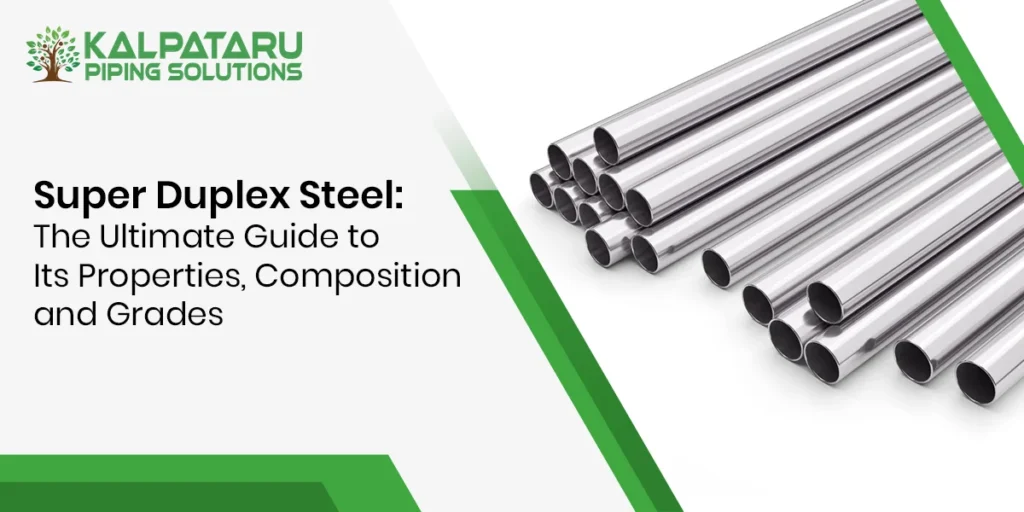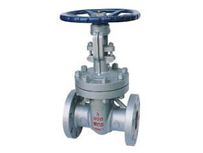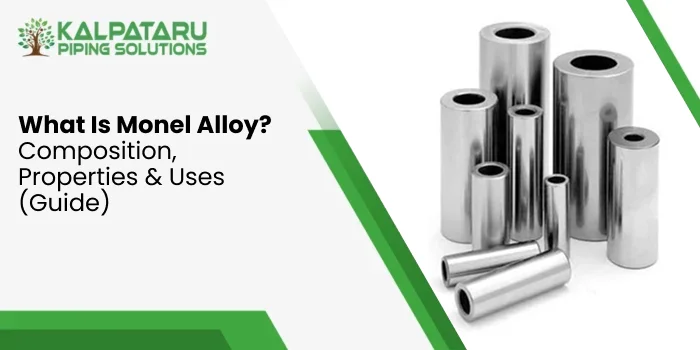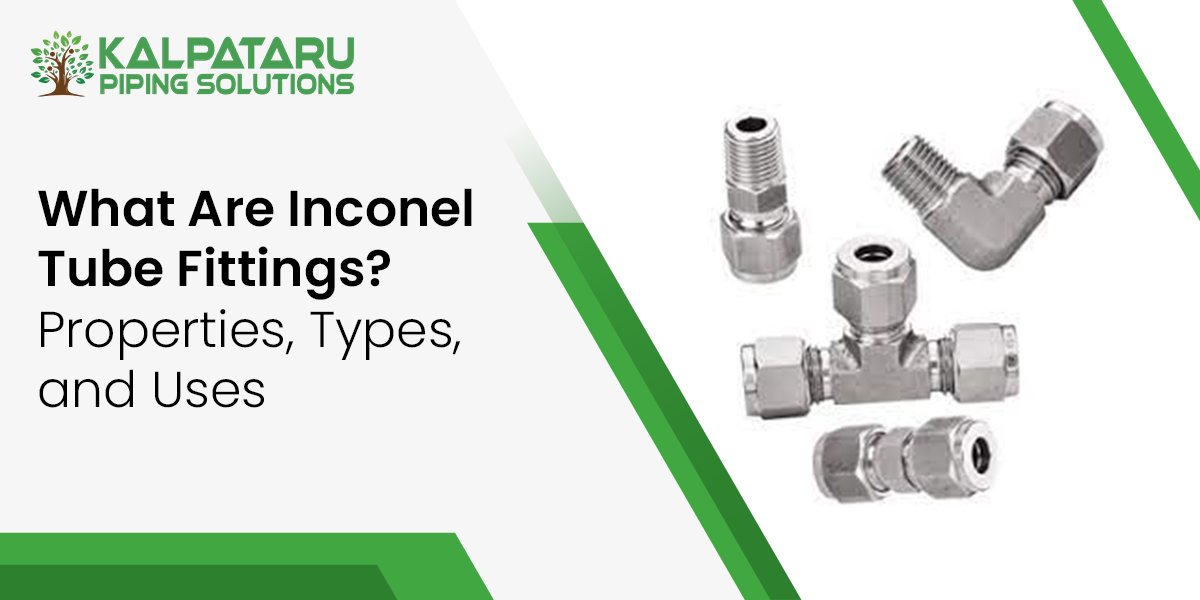
In industries where corrosion, chlorides, pressure, and uptime dictate success, material selection is critical. Standard stainless steels like 316 or 904L often fall short under aggressive brine, seawater, or sour gas conditions. Kalpataru Piping Solutions provides EPCs and operators with Super Duplex Stainless Steel, delivering nearly double the yield strength and PREN (Pitting Resistance Equivalent Number) values above 40, through high-performance grades like S32750 (2507) and S32760 (Z100). These alloys enable lighter, thinner, corrosion-resistant piping systems with proven QA/QC and swift delivery to demanding projects across Oil & Gas, Marine, Desalination, and Chemical industries. This guide provides a deep dive into the properties, composition and applications of these remarkable steel to help you make the best choice for your project.
What is Super Duplex Steel?
Super Duplex Stainless Steel (SDSS) is a highly-alloyed stainless steel featuring an approximately 50/50 mixture of two crystalline phases: austenite and ferrite. This combination provides both the toughness of austenitic stainless steels and the strength plus corrosion resistance of ferritic alloys.
The “super” prefix denotes enhanced corrosion resistance, especially inland chloride-induced pitting and stress corrosion cracking (SCC), thanks to higher alloying of chromium (≥25%), molybdenum, nitrogen, and sometimes tungsten compared to standard duplex grades.
Super duplex materials are well-suited for applications in harsh environments, addressing extreme chemical, thermal, and mechanical challenges better than traditional grades.
What are the key properties that define super duplex stainless steel?
The key properties that define super duplex stainless steel are:
- Exceptional Strength: Super duplex stainless steel offers very high yield strength typically around 600 MPa, about twice that of common austenitic stainless steels like 316L. This high strength enables the use of thinner, lighter sections without compromising safety or durability.
- Superior Corrosion Resistance: It delivers outstanding resistance to localized corrosion, including pitting corrosion and crevice corrosion especially in chloride-rich environments such as seawater and brines. This resistance is quantitatively expressed by a high Pitting Resistance Equivalent Number (PREN), generally 40 or greater. The PREN formula is:
PREN=%Cr+3.3×(%Mo+0.5×%W)+16×%N
- Excellent Resistance to Stress Corrosion Cracking (SCC): Super duplex steels are resistant to chloride stress corrosion cracking, crucial for harsh environments in Oil & Gas and seawater applications.
- Balanced Duplex Microstructure: It contains roughly equal amounts (~50/50) of ferritic and austenitic phases. This dual-phase structure combines the toughness and ductility of austenitic steels with the strength and corrosion resistance of ferritic steels.
- Good Fatigue and Wear Resistance: The ferritic-austenitic microstructure provides robust fatigue performance, making the alloy suitable for applications involving cyclic or vibrational loading.
- Thermal Stability: It has a lower coefficient of thermal expansion than standard austenitic stainless steels, helping reduce thermal stresses and maintain dimensional stability in temperature-varying conditions.
- Weldability: Super duplex stainless steels can be welded effectively if proper procedures are followed, controlling heat input and interpass temperatures to maintain phase balance and avoid embrittling phases.
- Magnetic Behavior: Due to the ferritic phase, super duplex steels exhibit partial magnetism, which can be relevant in certain inspection processes.
These properties make super duplex stainless steel a premium choice for industries where strength, corrosion resistance, and durability under harsh chemical and environmental conditions are paramount, such as Oil & Gas, Marine, Desalination, and Chemical Processing.
Chemical Composition of Super Duplex Steel
Typically includes high chromium (around 24-26%), molybdenum (3-5%), nickel (6-8%), nitrogen (0.24-0.32%), and sometimes tungsten (up to 0.7%) each element enhancing strength and corrosion resistance
Different Grades of Super Duplex Steel
Super duplex stainless steels are characterized by their high chromium (around 25%) content and elevated levels of molybdenum, nitrogen, and sometimes tungsten, which provide them with superior corrosion resistance and mechanical strength. The key grades differ mainly by their exact chemical composition and targeted applications
Grade S32750 (UNS S32750) — Often Called Grade 2507
- Composition: About 25% Cr, 3.5–4.5% Mo, 6.5–8% Ni, and 0.24–0.32% N.
- Key Properties: Very high pitting resistance (PREN ~40–45), excellent resistance to crevice corrosion and chloride SCC, and roughly twice the yield strength (~600 MPa) of common austenitic stainless steels such as 316L.
- Uses: This is the benchmark super duplex grade, widely used in offshore Oil & Gas (subsea pipelines, manifolds), desalination plants, marine environments, and aggressive chemical applications.
Grade S32760 (UNS S32760) — Often Called Zeron 100
- Composition: Similar to S32750 but includes tungsten (up to about 0.7%) and slight reductions in Mo and N. Typical composition is roughly 25% Cr, 3–4% Mo, 6.5–8% Ni, 0.20–0.30% N, and ~0.7% W.
- Key Properties: Enhanced corrosion resistance to pitting and crevice attack primarily because of tungsten, making it even more durable in extreme seawater and chemical exposures. Mechanical properties and strength are comparable to 2507.
- Uses: Preferred in highly corrosive marine, chemical, and desalination processes where additional pitting resistance is essential.
Grade S32550 (UNS S32550) — Also Known as Alloy 255
- Composition: Close to 25% Cr, ~3.5% Mo, ~7% Ni, and nitrogen ~0.3%.
- Key Properties: High corrosion resistance balanced with cost-effectiveness due to slightly reduced nickel.
- Uses: Suitable for chemical, desalination, and brine-rich environments requiring a strong and durable alloy without the highest nickel content.
Grade S32520 (UNS S32520) — Known as UR 52N+
- Composition: Similar chromium and molybdenum content, optimized nitrogen, with nickel typically 6–7%.
- Key Properties: Optimized for extreme acid and chloride resistance while maintaining high strength. Excellent for ultra-severe offshore and chemical exposures.
- Uses: Specialized applications involving highly aggressive sour or acidic environments.
Hyper Duplex Grades
- Includes compositions like S32707 and S33207 with even higher nitrogen content and alloying to push PREN values over 45.
- These provide maximum corrosion resistance and strength, particularly for extremely harsh marine, oilfield, and chemical environments.
Applications of Super Duplex Stainless Steel
The excellent mechanical strength, corrosion resistance, and durability of super duplex stainless steel make it highly valued across multiple demanding industries. Its superior performance in chloride-rich, sour, and high-pressure environments ensure longer operational life and fewer maintenance challenges.
Oil and Gas Industry
In Oil & Gas, super duplex stainless steel is extensively used on offshore drilling platforms, subsea pipelines, risers, and refineries. Components such as super duplex flanges are crucial for secure, corrosion-resistant connections within high-pressure piping systems exposed to aggressive fluids such as sour gas, brine, and seawater. The ability of super duplex to resist chloride stress corrosion cracking and pitting makes it a preferred choice to maximize uptime and ensure safety in extreme conditions.
Chemical Processing Industry
Chemical plants handle a wide variety of corrosive media, including strong acids and chlorides. Equipment such as pressure vessels, heat exchangers, pumps, and piping systems leverage super duplex stainless steel for its superior corrosion resistance and mechanical strength. Super duplex flanges play a vital role in chemical plants by maintaining the integrity of highly corrosive process lines and preventing costly failures and shutdowns caused by localized corrosion.
Marine Industry
Super duplex stainless steel’s exceptional seawater corrosion resistance and biofouling resistance make it ideal for marine applications. Shipbuilding, offshore platforms, and port infrastructure use super duplex flanges and piping to create robust, long-lasting connections that withstand constant exposure to aggressive marine environments. This resistance extends to chloride and microbiologically-influenced corrosion, critical for coastal and subsea installations.
Desalination Plants
Desalination requires materials capable of operating in extremely chloride-rich and erosive environments. Super duplex stainless steel finds application in heat exchangers, reject brine piping, pumps, and valves due to its excellent resistance to pitting and SCC. Super duplex flanges are critical components in these plants, ensuring leak-tight, durable joins that reduce downtime and maintenance costs resulting from corrosion.
Choosing the Right Super Duplex Steel for Your Project
- Understand Corrosion Environment: Chloride levels, temperature, oxygen, presence of crevices inform alloy choice and minimum PREN needed.
- Check Industry Codes: Comply with ASTM, NACE MR0175/ISO 15156, API, and other relevant standards.
- QA and Documentation: Specify requirements for MTC, chemical and mechanical testing (ASTM A923, A1084, and ISO 17781 for intermetallic phases), and weld procedure qualification.
- Supplier Expertise: Select partners like Kalpataru Piping Solutions who combine knowledgeable consultancy with certified, traceable supply and fast delivery.
Supplier of Super Duplex Steel in India
When corrosion resistance, strength, and operational uptime are critical, Super Duplex Stainless Steel leads. Kalpataru Piping Solutions delivers this superior material backed by deep technical insights, global certifications, and project reliability. With super duplex piping and components, EPCs in Oil & Gas, Marine, Desalination, and Chemical industries can design leaner, stronger systems that hold up longer under extreme conditions, ensuring greater value and peace of mind at every stage of their project lifecycle.



